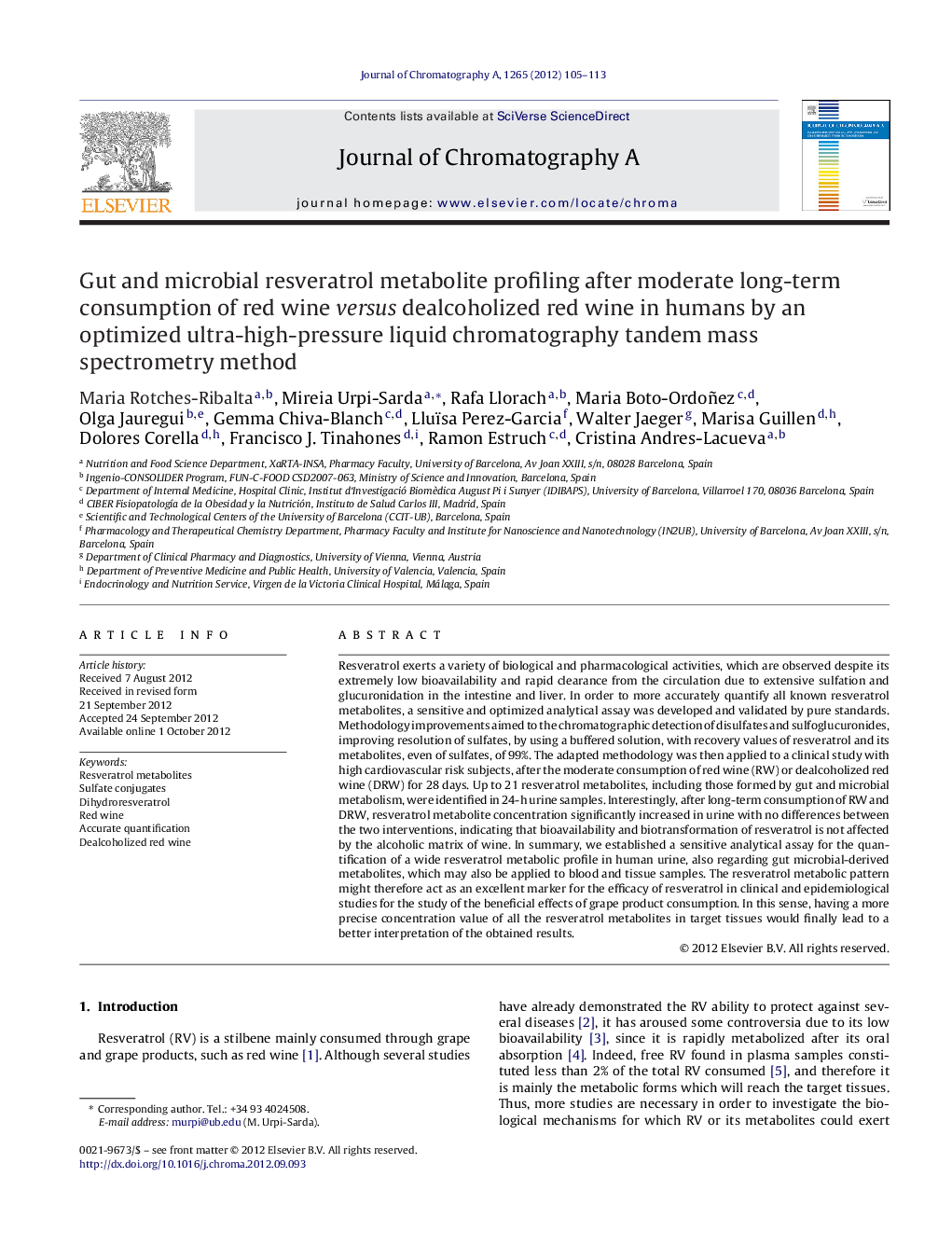| Article ID | Journal | Published Year | Pages | File Type |
|---|---|---|---|---|
| 1201862 | Journal of Chromatography A | 2012 | 9 Pages |
Resveratrol exerts a variety of biological and pharmacological activities, which are observed despite its extremely low bioavailability and rapid clearance from the circulation due to extensive sulfation and glucuronidation in the intestine and liver. In order to more accurately quantify all known resveratrol metabolites, a sensitive and optimized analytical assay was developed and validated by pure standards. Methodology improvements aimed to the chromatographic detection of disulfates and sulfoglucuronides, improving resolution of sulfates, by using a buffered solution, with recovery values of resveratrol and its metabolites, even of sulfates, of 99%. The adapted methodology was then applied to a clinical study with high cardiovascular risk subjects, after the moderate consumption of red wine (RW) or dealcoholized red wine (DRW) for 28 days. Up to 21 resveratrol metabolites, including those formed by gut and microbial metabolism, were identified in 24-h urine samples. Interestingly, after long-term consumption of RW and DRW, resveratrol metabolite concentration significantly increased in urine with no differences between the two interventions, indicating that bioavailability and biotransformation of resveratrol is not affected by the alcoholic matrix of wine. In summary, we established a sensitive analytical assay for the quantification of a wide resveratrol metabolic profile in human urine, also regarding gut microbial-derived metabolites, which may also be applied to blood and tissue samples. The resveratrol metabolic pattern might therefore act as an excellent marker for the efficacy of resveratrol in clinical and epidemiological studies for the study of the beneficial effects of grape product consumption. In this sense, having a more precise concentration value of all the resveratrol metabolites in target tissues would finally lead to a better interpretation of the obtained results.
► We optimized the analysis of resveratrol metabolic profile with 11 standards. ► We defined a resveratrol metabolic profile of 21 compounds. ► Resveratrol metabolites were accurately quantified, when standard available. ► The method was applied to a interventional study with red wine and a dealcoholized one. ► Resveratrol bioavailability could not be influenced by the alcoholic matrix of wine.
